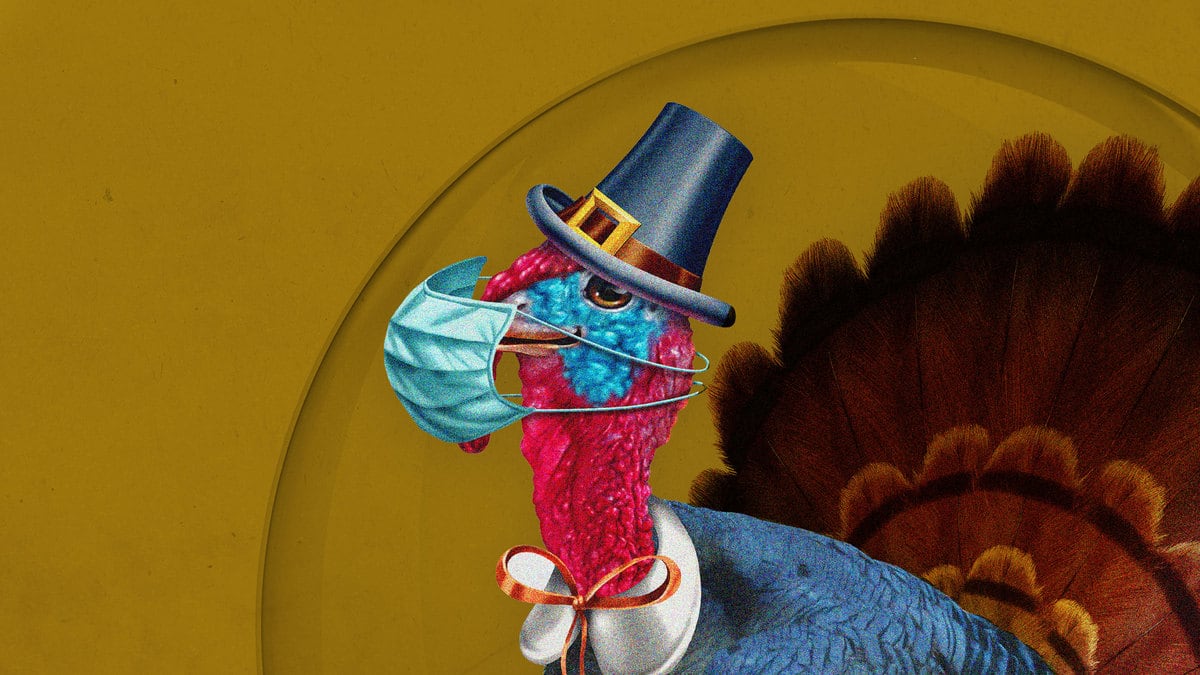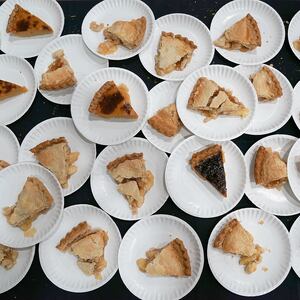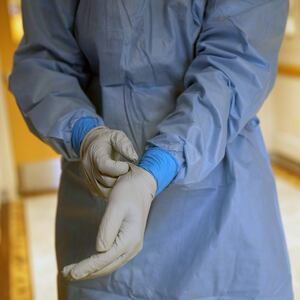When the Centers for Disease Control last week announced that Americans should not celebrate Thanksgiving with people outside of their household, officials working on the federal government’s COVID-19 response had already begun planning for the inevitability that family and friends would do just that, according to two senior officials familiar with the situation.
The CDC announcement Nov. 19 was viewed internally by health officials as a last-ditch attempt by the agency to try and convince Americans to stay home for the holiday and to advise those who would travel on how to reduce transmission. And there’s some evidence that the plea worked. A recent New York Times survey showed that only 27 percent of those who were polled were spending the holiday with people outside their household. But officials said they felt the CDC announcement came too late—people had already made their travel plans and those who had previously refused to adhere to public health guidelines during the pandemic were not going to suddenly change their habits.
With hospitalizations and new cases spiking in more than a dozen states across the country, doctors say the Thanksgiving holiday is likely to worsen an already terrible crisis. In the last week alone there were a reported 1.1 million Americans infected with the virus. About 1,200 people died on average per day, according to data collected by The New York Times.
ADVERTISEMENT
“There’s obviously the possibility, maybe even the likelihood, that there will be widespread gatherings in large groups with 18 to 25 people coming together from all different places, going through train stations and airports,” said Dr. Anthony Fauci, the nation’s top infectious disease expert, in an interview with The Daily Beast. “If people ignore the CDC recommendations to really dampen down the amount of travel and people at these events and they do it anyway… it is possible that this would lead to another surge upon the current surge that we’re going through.”
Officials at local health departments in places such as Wisconsin, Texas, California, Kansas, and New Jersey say their hospitals and nursing homes, already overwhelmed by the third wave of the virus and are preparing for a rush of new patients. In El Paso, inmates are working in temporary morgues that are, essentially, trucks filled with slabs of wooden beds, and funeral homes are already booking through December with plans to be inundated with calls in the next several weeks. In a hospital in Wisconsin, nurses are prepping for the possibility that their already maxed-out hospital will need to start sending patients to makeshift facilities. And in Kansas, one rural county has already called on the state to help investigate the virus’ transmission which has spread uncontrollably in recent weeks.
For officials in New Jersey, where in recent days new positive case numbers have surpassed numbers from the spring, at least one official believes there is little to be done in the way of convincing people to stay home for Thanksgiving.
“We’re realistic that people aren’t going to listen to the state or federal guidelines. You’re not going to get them to change their plans. People are going to make decisions with short-term interests and that’s just what people do. We’re not going to tell them they aren’t allowed to have people over at Thanksgiving. That’s not productive,” said Steven Fulop, mayor of Jersey City. “Our goal is to just get more people tested between now and the holiday.”
One of the main problems for communities heading into the holiday, one senior federal health official said, is that many states have either failed to kickstart an effective contact tracing program or have stopped attempting contact tracing entirely. For those neighborhoods, local officials are instead relying on infected individuals to trace their own contacts.
In Madison, Wisconsin, officials have halted contact tracing because of the sheer number of residents testing positive each day. One nurse said the hospital averaged about 10 COVID-19 patients on any given day. As of last week, the hospital was treating more than 85 patients.
And yet, one nurse working at the UW Health University Hospital in Madison said she expects residents across Wisconsin to gather in large groups for the holiday. She said dozens of her patients have come into the hospital convinced their symptoms were the result of anything other than COVID-19.
“I live in a state where so many people don’t believe in this,” she said. “I had a 13-year-old come in with diabetes and she had all the signs of COVID. The parents said ‘She doesn’t have it.’ Sure enough the test came back positive and they asked, ‘Oh is that bad if she has diabetes?’ There’s so little education here. That patient is still intubated.”
The nurse, who said she had to wear the same N95 mask for almost three months over the summer due to shortages, spoke with The Daily Beast on the condition of anonymity because she was not authorized to speak about her hospital. She said she has seen a slew of children present with COVID-19 in recent weeks, many of them college students complaining of chest aches long after infection. She also said she’s treated a dozen babies under the age of 60 days who tested positive for the virus.
“I think our rates of infection and hospitalizations are at the highest level they have been since the pandemic began. We are not seeing any decline,” said Dr. Nasia Sadfar, the medical director of infection control at UW Health. “We’re worried about an additional increase after the holiday. One should assume if you meet someone outside your household someone might have COVID and not know it.”
In Modoc County, California, a rural community of just 10,000 in the northwesternmost point of the state, COVID-19 cases are surging. The county, once known as the only California county without a coronavirus infection, implemented a mask mandate in the middle of the summer after an initial public backlash to the idea. Since then, residents say members of the community have refused to adhere to public health guidelines. One resident, Leigh, who did not want to offer her last name for fear of retribution, said she does not expect her neighbors to practice social distancing over the holiday.
On one of the two Facebook groups for residents of the county, Leigh said residents continue to post debunked theories about the virus, which feeds into the local understanding of how COVID-19 is transmitted.
“I remember on one of those groups people said that part of the reason we didn’t originally have any COVID-19 cases is because people in the community thought they had already caught it… before the pandemic even began… and that they had immunity,” said Leigh, who has been keeping a diary of all the new cases and deaths in the county.
Perhaps nowhere has the coronavirus hit as hard in recent months as Texas, particularly the Rio Grande Valley, where local officials have been overwhelmed with the number of people dying from COVID-19. While states such as South Dakota are currently experiencing increasing death tolls, the situation in El Paso—a municipality already struggling to stay afloat financially—has become so dire that officials are paying inmates $2 an hour to move bodies into makeshift morgues. Funeral homes in the city are struggling to keep up with the demand and are bracing for a busy winter. One funeral home director said his business is expecting an uptick in deaths by Christmas that would be tied to the spread of the virus during Thanksgiving, so he is preparing by ordering more caskets and ensuring staff are readily available.
“We’ve seen a lot of cases in the past few weeks, we’ve been very busy,” said a representative for an Hillcrest Funeral Home in El Paso who said they are still holding small services despite the COVID-19 outbreak. “But people are only as safe as they make themselves safe.”
One of the main concerns among health officials is that Americans who do plan to travel for the holiday and celebrate with family and friends outside their households will not listen to the recent CDC guidance that advises people to wear a mask indoors. Portions of the population are already so resistant to practicing social distancing and wearing masks outdoors that health officials say there’s little chance they will reverse course when inside the home.
“It will be the perfect storm,” said one senior health official working with the White House coronavirus task force. “We’re next expecting that everyone will listen to the plea to stay home and celebrate with those in your households. And I think we’re going to see things get a lot worse.”








